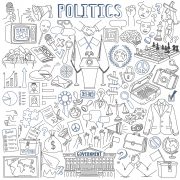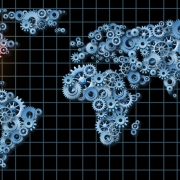Our system of government is no longer working for us. It produces unsustainable levels of spending, increasing amounts of debt that can’t be repaid, and a torrent of regulation that makes all of us criminal in ways we don’t fully understand. It doesn’t keep us safe. It propagandizes, rather than educates, our kids. It conducts unjustified foreign wars. It confiscates large chunks of our income and wealth.
Our political system, which is embedded in our system of government and supplies it with its elected officials, is similarly out of control. It produces hyper-partisanship and conflict and is eroding our trust, the low supply of which will make government even more dysfunctional because citizens will not obey when there is no trust. It is destroying the institutions that have supported our way of life for over 200 years, and it leads the way in undermining and cheapening the culture.
Can we use systems thinking to point the way to a solution? Systems thinkers believe they can.
To Change A System, Look For Its Function.
A system is an interconnected set of elements that is coherently organized in a way that achieves something. That definition tells us that a system consists of three kinds of things: elements, interconnections, and a function or purpose. A football team is a system with element such as players, coach, field and ball. Its interconnections are rules of the game, the coach’s strategy, the players’ communications and the laws of physics that govern the motions of the ball and the players. The function of the system is to play and win games.
A government is a system with executive, legislative and judicial bodies, administrative departments, a military and a central bank. Its interconnections are laws (which it self-manufactures) and regulations, and the processes to produce them, and its function is to produce more laws and more government.
In Thinking In Systems: A Primer, Donella Meadows told us how to identify the function of a system.
If a frog turns right and catches a fly, and then turns left and catches a fly, and then turns around backward and catches a fly, the purpose of the frog has to do not with turning left or right or backward but with catching flies.
If a government proclaims freedom and efficiency and spending control but produces more and more regulations and more and more spending and more and more debt, freedom and efficiency are not, in fact, the government’s purpose. It may turn left and it may turn right, but it is always producing more government, and that is its purpose. The least obvious part of the system, its function or purpose, is often the most crucial determinant of the system’s behavior.
Self-Organizing Systems.
A system can, to a large extent, cause its own behavior. It can be self-organizing. A system’s function or purpose is not necessarily spoken, written, or expressed explicitly, except through the operation of the system. The best way to deduce the system’s purpose is to watch for a while to see how the system behaves. We have watched the behavior of government over 200 years and it consistently produces more government, more spending and more debt. Government exhibits what systems thinkers call a problem-generating structure.
Understanding problem-generating structures is not enough. Putting up with them is impossible. They need to be changed. The destruction they cause is often blamed on particular actors or events, although it is actually a consequence of system structure.
Blaming, disciplining, firing, twisting policy levers harder, hoping for a more favorable sequence of driving events, tinkering at the margins—these standard responses will not fix structural problems.
In ascending order of effectiveness, the places to intervene in systems are:
Goals: If we can change the function or the purpose of the system, its processes and interconnections and flows will change. Can we change the goals of government to governing less? Ronald Reagan attempted to. Reagan said over and over, the goal is not to get the people to help the government and not to get government to help the people, but to get government off our backs. He changed the discourse about government – testimony to the high leverage of articulating, meaning, repeating, standing up for, insisting upon, new system goals
Paradigms: the mind-set out of which the system—its goals, structure, rules, delays, parameters—arises. Today’s paradigm is acceptance of government. We pay our taxes and tolerate our sons and daughters fighting on foreign soil and coming home maimed, disfigured, traumatized and, sometimes, dead. We put up with the government’s propaganda mill schools. We tolerate the disgusting behaviors of elected officials and the intrusion of bureaucrats into our everyday lives and decisions. We should correct the paradigm to one of non-acceptance. We should treat government, politicians and bureaucrats as an alien, invading, occupying force. We should fight to reclaim our lives and our culture and our safety. We should not tolerate.
Transcending Paradigms: The most powerful way to change systems is not just to shift the paradigm, but to replace it entirely. The new paradigm is no government. It’s what the systems thinkers call self-organization and the economists call spontaneous order. Systems can learn, create, design and evolve. Self-organizing systems can produce heterogeneity and unpredictability. They can come up with new structures through freedom and experimentation, which might include a certain amount of disorder. Self-organizing will be resisted by bureaucracies and education systems and governments who prefer their subjects to be subjugated. But the most overbearing power structure can never fully kill self-organization, because it is a basic property of living systems. A few simple organizing principles – what F.A. Hayek called general rules – can lead to wildly diverse self-organizing structures. Self-organizing starts from the bottom of hierarchies – from the pieces to the whole, from the individual to the group, from the production line to management of production. If the hierarchy is not functioning well from the top down, the solution is to change from the bottom up. If there is over-control from the top, the bottom must become the source of change.
Organization from the bottom up – from individuals, families, neighborhoods, towns, small cities, tax-free enterprise zones, free cities, floating cities, local banks or blockchains issuing their own currencies – can be our new paradigm to replace central government.













